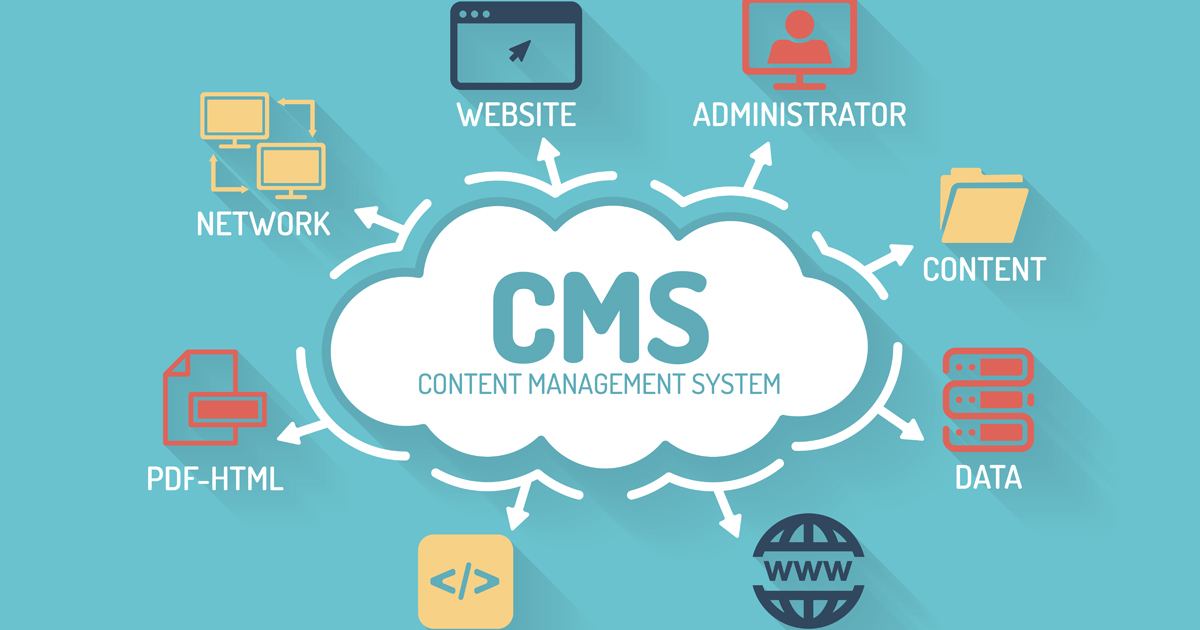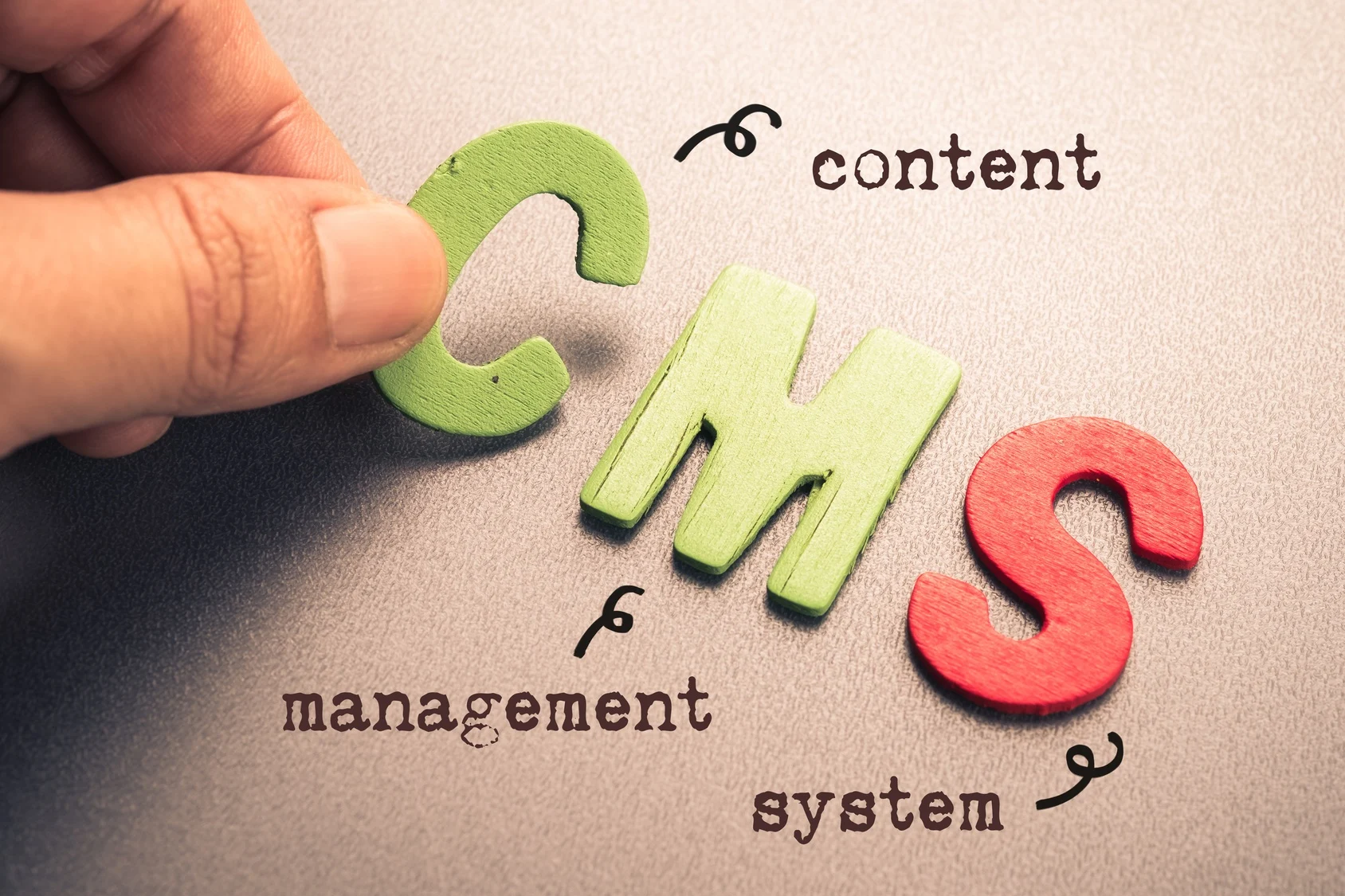Choosing a CMS is the first step to a successful website. The right CMS simplifies working with content, helps with SEO, and adapts to the project’s objectives. Among the many options are WordPress, Joomla, Drupal, 1C-Bitrix, OpenCart. Each has its own strengths.
WordPress is the most popular choice for blogs and corporate websites, while OpenCart is ideal for online stores. It is important not only to take into account current needs, but also the future development of the project. We'll tell you what a CMS is, what types exist, and which options may be suitable for your business.
What is CMS
A CMS, or content management system, is software that makes it easy to create, edit, and manage a website. It allows you to add and update content without the need to know programming languages. Using a CMS, you can manage texts, images, videos and other website elements through a convenient interface.
Choosing the right CMS is an important step in website development. It determines how easy it will be for you to work with the site, how functional and flexible it will be in terms of expanding its capabilities.
There are many CMSs out there, from simple to complex, each with its own benefits. Some of them are designed for specific types of sites: blogs, corporate sites, online stores. When choosing a system, it is important to consider not only the current needs of your project, but also possible future requirements.
The most popular systems are WordPress, Joomla, Drupal, 1C-Bitrix and OpenCart. WordPress is a versatile choice that is easy to learn. Joomla and Drupal - for complex projects with unique functionality. 1C-Bitrix is preferable for integration with Russian services. OpenCart is ideal for online stores thanks to its specialized shopping tools. We’ll tell you more about each of them and more a little later.
The functionality of the CMS is as follows:
- Content management. The central function of any CMS is to simplify the creation, editing and deletion of content. Editors allow you to work with texts, add images and videos, and format materials without delving into technical details.
- Templates. The CMS offers design templates that you can easily adapt to your website. You can quickly launch a professional-looking website without hiring a web designer.
- SEO optimization. Built-in tools help prepare your site for promotion in search engines, improving its visibility.
- Multilingual. With support for multiple languages, the CMS makes it possible to reach a wider audience by managing different versions of content in one place.
- Extensibility. Thanks to plugins and add-ons, you can expand the functionality of the site, adding new features as needed.
- User management. The ability to configure user roles and access allows you to effectively organize the team’s work on the site.
- Mobile adaptation. The CMS automatically adapts your website to different devices, ensuring comfortable reading and navigation on smartphones and tablets.
What types of CMS are there?
First, let's understand the terms. Often they put an equal sign between the CMS and the “engine”. To say that a CMS and a website’s “engine” are the same thing is not entirely accurate. CMS is a content management system designed for convenient interaction with texts, images and other site materials. The “engine” of the site is responsible for its technical functioning.
Some website CMS combine both of these functions, allowing you not only to manage content, but also to ensure the operation of the site as a whole. Examples of such universal systems are WordPress and Joomla.
You can create a website using different CMS:
- boxed,
- designers,
- self-written,
- cloud solutions.
We suggest you decide which CMS is better for your website after our review.
Boxed
Boxed CMS are ready-made solutions that allow you to create a website quickly and efficiently. They offer a wide range of functions, support the development of websites of varying complexity and are focused on convenient content management.
The main task of boxed CMS is to provide effective management of website content without the need for deep programming knowledge. They allow users to create, edit and delete pages, as well as manage media files (images, videos) and other site elements. For this purpose, visual editors and intuitive tools are provided.
Boxed CMSs usually offer a range of templates and themes that can be easily customized to suit the site's individual needs. Many of them have built-in tools for SEO optimization, such as setting up meta tags, improving indexing, and creating a sitemap. This helps the site rank better in search engines.
It is important that you can add new functionality thanks to plugin support. If you want to make communication with users closer, you can, for example, connect a forum. In this case, you will not need to develop your own code.
Boxed CMSs can do a lot, but they are not perfect. They sometimes do not give complete freedom. In addition, due to their popularity, security problems may arise - they are more often attempted to be hacked. In order for the site to work well and be protected, you need to regularly update the CMS itself and its additions.
Boxed content management systems include Wordpress, 1C-Bitrix, Joomla, OpenCard, Magneto, Drupal, MODx. Some of them are paid, for example, 1C-Bitrix. Among the free ones is Wordpress.
Constructors
Website builders are tools that allow you to create a website without deep programming knowledge. They offer a visual interface where you can easily place website elements.
With the help of designers, you can choose a template that suits the idea of your site and adapt it by changing texts, images and page layout. It's convenient and fast. Platforms like Wix or Squarespace provide a wide range of designs and functionality: SEO tools for website promotion and integration with social networks.
Builders may not offer you the full customization freedom that is available in an open source CMS like WordPress. The site remains tied to the service: if you decide to move to another platform, you will most likely have to start all over again.
Costs may vary: basic functionality is often offered for free, but additional features usually require a fee. What applies to such extras? Typically this is the use of your own domain without mentioning the name of the designer in the site address.
Choosing a website builder is an excellent solution for beginners, small businesses or personal projects, when it is important to quickly launch a website and not spend a lot of resources on its development and support.
You can consider the following designers: Wix, Tilda, Readymag, uCoz, Nethouse.
Self-written systems
Self-written CMS are created from scratch for a specific website or company. It's not something you download and install like WordPress. The developers write it specifically for you, taking into account all your wishes and requirements. This is good when you need something very specific that is not available in ready-made solutions. You get a system that is ideally suited to business tasks and can easily be connected to other programs.
But self-written CMSs also have disadvantages. Firstly, it is more expensive and longer than using a ready-made system, because everything is done individually. Also, you bear all responsibility for site support, updates and security. If something breaks, you will have to contact the developers who created it.
Typically, large companies use their own systems, since they need to take everything into account and have many unique modules. These are banks, marketplaces, IT companies.
Cloud solutions
People access websites from different devices: computers, phones, tablets. It is important that the site looks good on all screens. But making a universal interface that would work perfectly everywhere is difficult and expensive. Often you have to create several versions of the site for different devices, which is also inconvenient and requires a lot of work.
This is where a “cloud” or Headless CMS comes to the rescue. This technology allows you to manage site content so that it displays equally well on any device. A “headless” CMS is not tied to one interface; it can work with any platforms and devices, automatically adapting content.
The advantages of this approach:
- Many different interfaces can be connected.
- Suitable for any programming language.
- Easily added to an existing site without requiring a new development team.
- You can easily scale up your site.
- High level of security, protection against attacks.
But there are also disadvantages:
- For everything to work, you need to set up data exchange via the API. This can be difficult, so you may need to hire specialists.
- You will need a dedicated server, which is usually more expensive than regular hosting.
Headless CMS is a modern solution for those who want to make their website user-friendly on any device. It is ideal for creating websites and website CMSs where flexibility, security, and scalability are important.
Review of the top 7 CMS in 2025
WordPress
WordPress is the leader among CMS, suitable for any site: from a blog to a large corporate resource. With its help, you can easily expand the functionality of your site using thousands of available themes and plugins. WordPress supports multilingual sites, offers tools for SEO optimization, the site's CMS makes it easy to work with content and allows you to integrate with social networks.
|
Pros |
Cons |
|---|---|
|
Flexibility through open source |
Open Source Vulnerability |
|
Easy to control |
Limited basic functionality |
|
Free templates and plugins |
|
|
Easy installation: no programmers needed |
|
|
Search Engine Optimization |
Joomla
Joomla is a multifunctional CMS. You can use it to create business card websites, blogs and online stores. You don't need to buy a license. Additionally, there is a marketplace with plugins and scripts for a variety of tasks. Has made a lot of progress lately
|
Pros |
Cons |
|---|---|
|
Automatic error debugging |
Open Source Vulnerability |
|
Built-in mail |
Low security |
|
Accelerated website loading |
|
|
SEO Tools |
OpenCart
OpenCart is a CMS specialized in creating online stores. There is a whole store with more than 12,000 add-ons that help organize delivery, connect a shopping cart and modern payment systems.
|
Pros |
Cons |
|---|---|
|
Many built-in modules from moderation to applying tax rates |
Open Source Vulnerability |
|
More than 1000 templates to create your store |
Some features are paid |
|
Ability to edit content and enable SEO optimization |
To support the site you will need the help of a specialist |
|
Works quickly even with a large catalog (up to 30 thousand products) |
Magento
Magento is used to create online stores. Offers 6,500+ modules for integration. This is a boxed solution, meaning no programming knowledge is required. There are extensions and templates for everything. Magento is the leader among eCommerce platforms around the world. It is also supported in Russia.
|
Pros |
Cons |
|---|---|
|
Convenient access setup for multiple users |
There is a paid version with a full range of options |
|
Great functionality from implementing a loyalty program to collecting reviews |
|
|
Tools for SEO promotion |
MODx
Modx is not suitable for standard and typical tasks. To work you need to be able to program and understand HTML. There are no ready-made templates here, but you can implement any HTML scripts. Can be integrated with Planfix, U-cash, Bitrix24 and other systems.
|
Pros |
Cons |
|---|---|
|
Free program |
To launch you will need help from developers |
|
File manager for storing large amounts of information |
Open Source Vulnerability |
|
Built-in tools for search engine promotion |
|
|
Open source, allowing you to customize everything for yourself |
Tilda
This is a modern and multifunctional website builder . The visual editor is impressive and easy to use. The library has many ready-made templates created for different types of business. Suitable for entrepreneurs and small and medium business owners.
|
Pros |
Cons |
|---|---|
|
Convenient visual editor that allows you to customize the site at your discretion |
No integration in the free plan |
|
Ideal for landing pages |
High subscription cost |
|
Lots of educational material |
You can connect your own domain only in the paid version |
|
Integration with analytics services, payment systems and other programs |
Wix
This is a cloud-based website builder . Here you can create HTML5 websites and mobile websites using an online drag and drop interface. The service is in second place in popularity of use throughout the world.
|
Pros |
Cons |
|---|---|
|
Intuitive interface |
Difficult to port to another platform |
|
Many templates for different areas |
For full and advanced use, you need to choose a paid plan |
|
Flexible design: you can add your photos, videos, documents |
Slow loading of the site if there is a lot of content on it |
|
There are tools for SEO |
Free site will display Wix ads |
|
Can be tested in the free version |
It’s up to you to decide which cms is better to use to create a website. The main thing is to correctly allocate the budget and find specialists.
Which CMS is better to choose for a website?
Choosing a CMS is a decisive step that determines how things will go further. Focus on goals, budget and convenience. It is difficult to say which cms has the best sites, since each company has its own indicators. Go through this checklist when choosing:
- Target. If you need a blog, then WordPress is the best choice due to its ease of content management and a huge number of themes and plugins. Bitrix is suitable for a store. It offers advanced tools for e-commerce, order and customer management.
- Skills. Beginners should choose builders like Tilda or Wix or Wordpress. They are easy to use and do not require special programming knowledge. A website can sometimes be created in just a couple of hours.
- Reviews. Evaluate the popularity of the site's CMS, advantages and disadvantages through ratings and user reviews.
- Budget. There are paid and free options. Of course, if you need a serious website with a large number of slots for products or a portal with a lot of content, then you can’t get away with the free version. Think about what services you need to integrate.
- It is important that the chosen CMS has good SEO capabilities, allows you to easily customize meta tags, URLs, and supports mobile versions of sites.
If you don’t want to understand content management systems or struggle with content and promotion, contact us. Leave a request. We will analyze your website, suggest where and what to improve, or help you create a website from scratch.



